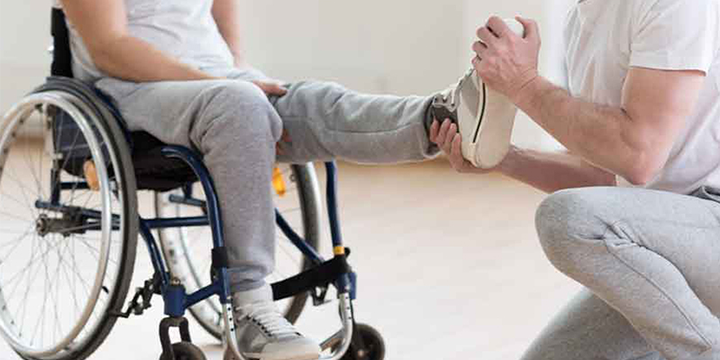One of the most sudden medical emergencies that no one is ever ready for, even when we know it could happen anytime and be part of the aging process, is paralysis. Suddenly, a space, a room with a bed is converted into a ‘combat zone’ of medicines, cleaning fluids, cotton, gauze, bottles, feeders, napkins, rubber or plastic mattress protectors, etc. It’s devastating for the family and immediate amateur care-giver in the family, who suddenly finds his/her hands full.
Paralysis is the loss of muscle use in a particular part of the body. As a result, the patient will not be able to move that body part properly. People suffering paralysis also lose all sensation in the affected areas of the body. They may not notice a pin, or a hot object pressed against the paralyzed limb. This proves that something has gone wrong with the way signals are passed between the brain and the muscles.
What causes paralysis?
Blocked blood vessels or injury to the brain can cause a stroke. This can lead to difficulty with verbal communication, understanding, swallowing and movement. The right side of the brain affects the left side of the body and vice versa. Where the stroke takes place will determine where paralysis may occur. Paralysis is most often caused by damage to the nervous system, especially the spinal cord. Major causes are stroke and trauma with nerve injury. Other causes include poliomyelitis, botulism, spina bifida, multiple sclerosis, and Guillain-Barré syndrome.
What are the types of paralysis?
The type of paralysis depends upon the area of injury to the spinal cord. Quadriplegia is paralysis that affects the arms and legs, as well as the chest and stomach. Paraplegia affects the legs, abdomen, and can also affect the chest area as well. Cauda Equina Syndrome affects the nerves in different parts of the body.
There is no enduring cure for paralysis. However, therapy and proper treatment aspire to make patients as independent as possible. Paralysis treatment also addresses health problems and any other impediment. Very often, treating the underlying cause of the problem restores mobility in the affected body part. Medication, therapy, surgery and exercise are all means of treating paralysis.
Paralysis and the important role of physiotherapy
Physiotherapy should be started as soon as possible. It will help to improve blood circulation and relax muscles. It can also slow down the progress of paralysis. Treatment can improve muscle tone and the general well-being of the patient. When a brain has suffered an external injury, physiotherapy may reduce swelling and speed recovery too.
At TriBeCa Care, our physiotherapy for paralytic patients at home focuses on helping the patient remain as mobile as possible. Our physiotherapist sets to work on unaffected muscles, so that they compensate for those muscles afflicted with paralysis. Physiotherapy also helps preserve and build strength in the affected muscles. This will help prevent the limbs from becoming buckled and bowed. As limbs are getting better, physiotherapy can be used to help retrain the nerves and muscles. TriBeCa Care’s physical therapist also suggests adaptive equipment such as braces, canes, or wheelchairs.
TriBeCa Care’s physiotherapy treatment for paralysis focuses on:
- Muscle intensification
- Stretches to maintain muscle length and joint range of motion
- Advance steadiness exercises
- Dynamic balance work
- Transfer practice to improve confidence
- Re-education of walking blueprint
- Facilitation of return to hobbies/driving/work
- Ideas on use of gymnasium facilities to proper effect
- Functional electrical stimulation
- Provision of walking aids and equipment, if needed
You may want our physiotherapist to liaise with other health professionals who are involved in your care. This is a constructive step that will ensure best possible development and most excellent management in overall quality of life.
The benefits of physiotherapy by TriBeCa Care are:
- Augmented muscle potency
- Maintaining the range of movement and muscle length
- Improved core steadiness
- Improved sitting/standing equilibrium
- Improved co-ordination and sensation
- Improved right posture
- Improved capacity to complete transfers
- Improved walking pattern and energy[Improved aptitude to carry out day to day activities
- ·Exercises to complete at home independently or with family
If you need further help or advice, give us a call. TriBeCa Care is happy to be by your side. Request a callback or Call us at + 913366064208.
Email us at enquiry@newwpsite.tribecacare.com

